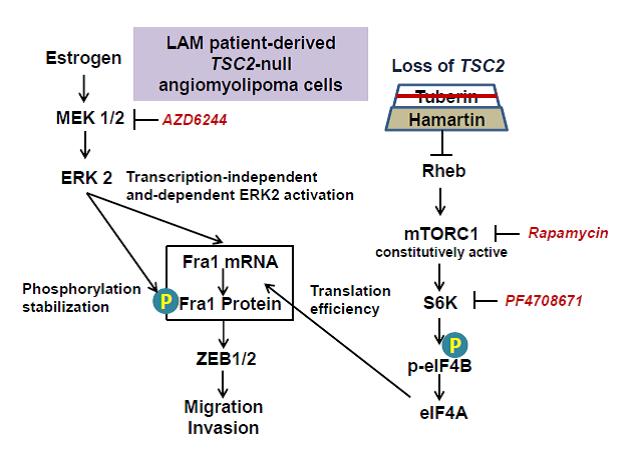
Lymphangioleiomyomatosis (LAM) is a destructive lung disease specific to women and is associated with the metastasis of Tuberin (TSC2)-null cells with hyperactive mTORC1 (mammalian target of rapamycin complex 1) activity. Clinical trials with the mTORC1 inhibitor rapamycin have revealed partial efficacy but are not curative. Pregnancy appears to exacerbate LAM, suggesting that estrogen (E2) may play a role in the unique features of LAM. As reported in PNAS, the Blenis Lab uses a LAM patient-derived cell line (bearing bi-allelic TSC2 inactivation) to demonstrate that E2 stimulates a robust and biphasic activation of extracellular signal-regulated kinase 2 (ERK2) and transcription of the epithelial-to-mesenchymal transition (EMT)-associated late response gene Fra1. In a carefully orchestrated collaboration, activated mTORC1/S6K1 signaling enhances the translation efficiency of Fra1 mRNA transcribed by the E2-ERK2 pathway, through S6K1-dependent eukaryotic translation initiation factor 4B (eIF4B) phosphorylation. This finding indicates that targeting the E2-ERK pathway in combination with the mTORC1 pathway may be an effective combination therapy for LAM.